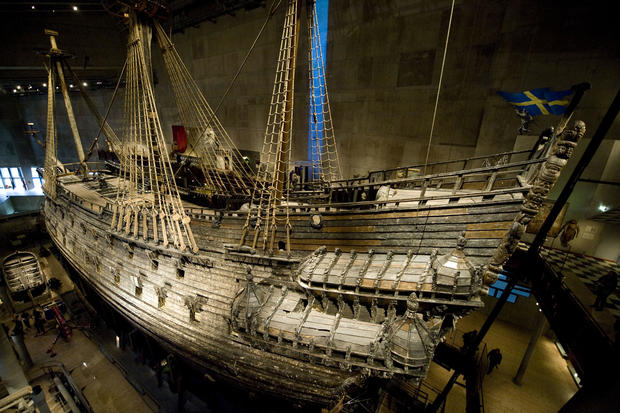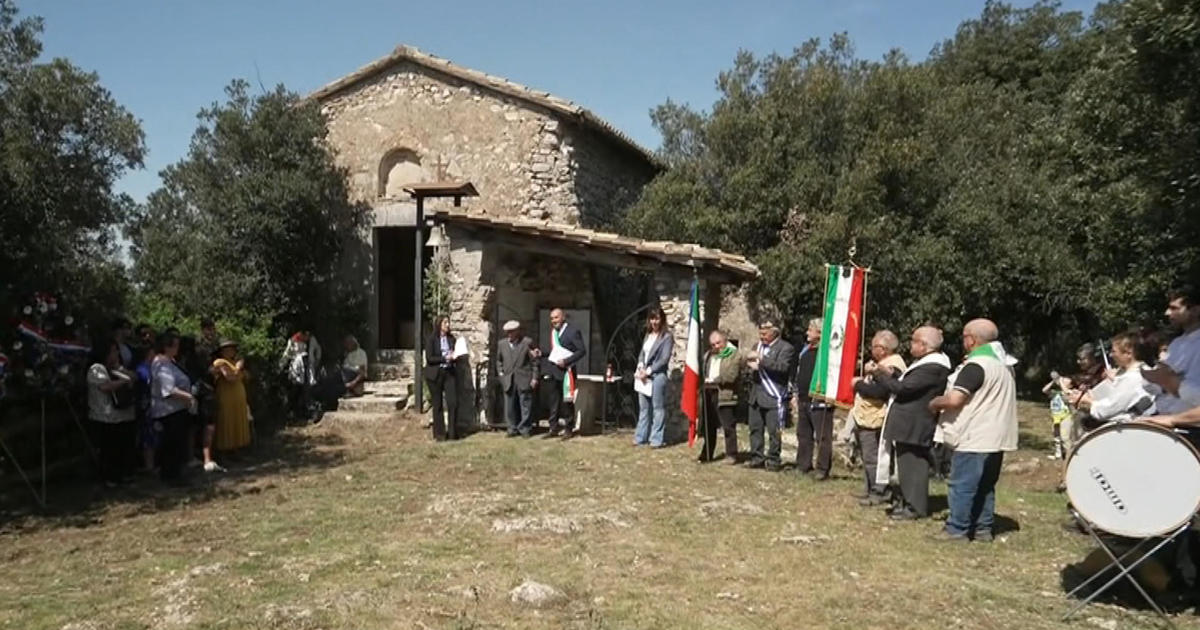Woman was among victims on famed 17th century warship that sank on maiden voyage, DNA shows
A U.S. military laboratory has helped Swedes confirm what was suspected for years: A woman was among those who died on a 17th-century warship that sank on its maiden voyage, the museum that displays the ship said Tuesday.
The wreck of the royal warship Vasa was raised in 1961, and was remarkably well-preserved after more than 300 years underwater in the Stockholm harbor. It has since been place at the Vasa Museum, one of Stockholm's top tourist attractions where visitors can admire its intricate wooden carvings.
Some 30 people died when the Vasa keeled over and sank just minutes after leaving port in 1628. They are believed to have been crew members and most of their identities are unknown.
For years, there were indications that one of the victims, known as G, was a woman, because of the appearance of the hip bone, Fred Hocker, research leader at the Vasa Museum, said in a statement.
Anna Maria Forsberg, a historian with the Vasa Museum, told The Associated Press that women were not part of the crew in the Swedish navy in the 17th century, but they could be on board as guests. Seamen were allowed to have their wives with them onboard unless the ship was going into battle or going for a long journey.
"We know from written sources that around 30 people died that day," Forsberg said. "It is thus likely that she was a seaman's wife who wanted to come along on the maiden journey of this new, impressive ship."
She said the exact number of people on board that day was not known "but we think there were around 150 people. An additional 300 soldiers were supposed to board further out in the archipelago," she said.
Since 2004, the Vasa Museum collaborated with the Department of Immunology, Genetics and Pathology at Uppsala University, which examined all the skeletons on Vasa in order to find out as much as possible about the various individuals on the doomed vessel.
"It is very difficult to extract DNA from bones that have been on the seabed for 333 years, but not impossible," Marie Allen, professor of forensic genetics at Uppsala University said in the statement. "Simply put, we found no Y chromosomes in G's genome. But we couldn't be completely sure and we wanted to have the results confirmed."
So they turned to the Delaware-based Armed Forces DNA Identification Laboratory. And thanks to the forensics laboratory specializing in DNA profiling at the Dover Air Force Base, "we have been able to confirm that the individual G was a woman, using the new test," Allen said.
The Vasa which was supposed to go to a naval base outside Stockholm to wait for the boarding of the soldiers, is believed to have sunk because it lacked the ballast to counterweigh its heavy guns.
Named after one of Sweden's kings, the Vasa was originally meant to serve as a symbol of Sweden's military might but instead capsized after sailing just over 1,000 yards.
Last October, maritime archaeologists announced the discovery the Vasa's sister vessel called Applet (The Apple). Launched in 1629, Applet was built by the same shipbuilder as the Vasa.
When Sweden joined the Thirty Years' War, Applet was among the ships sailing towards Germany with about 1,000 men on board, the Swedish Museum of Wrecks said. After the war, the ship was no longer deemed seaworthy.
"Applet was sunk off Vaxholm in 1659 to become part of an underwater barrier that would prevent the enemy from reaching Stockholm by sea," the museum said.
Two other ships were also ordered from the same shipwright: Kronan (the Crown) and Scepter, and like Applet, they also served in the Swedish navy and participated in naval battles.
AFP contributed to this report.





